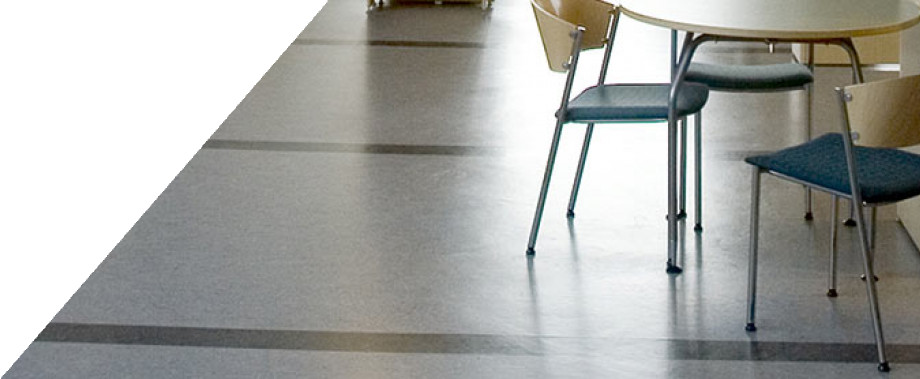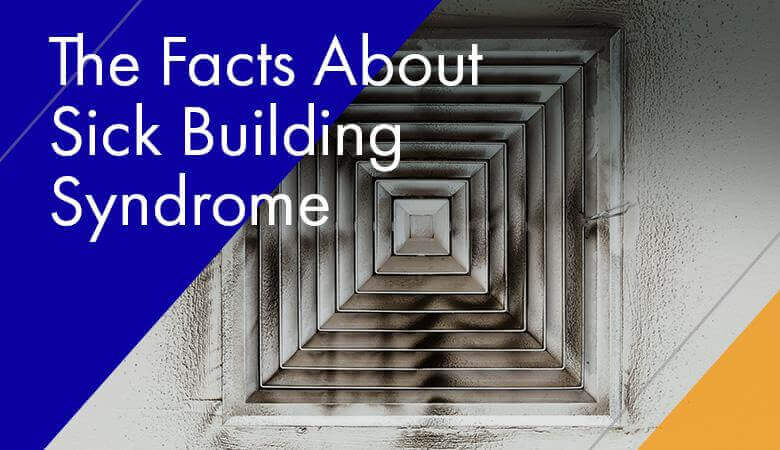The Facts About Sick Building Syndrome
Can a building make a person sick? Absolutely. According to IQAir, “when building occupants are becoming ill from their environment, and the cause is clinically diagnosed, it’s called ‘Building Related Illness.’ When the reason is unknown, it’s called ‘Sick Building Syndrome.’”
Sick Building Syndrome (SBS) is an actual term coined by the World Health Organization in the 1980s. It describes symptoms such as nausea, headache, dizziness, eye and skin irritation, dry cough, odor and taste sensations, difficulty concentrating and lethargy that disappear when the affected person leaves a building.
This phenomenon is of great concern, not only to those experiencing its effects, but also to building and facilities managers who recognize the potential financial losses that a sick building can cause.
A Case Study
“In the 1990s, a 20-story state office building in Connecticut required millions of dollars in repairs and mold remediation after workers began experiencing a variety of illnesses. Eventually the building’s entire heating, ventilation and air conditioning (HVAC) system was overhauled and the roof replaced in an effort to pinpoint the problem that was making workers sick. Many workers were eventually relocated to other buildings, a very costly process. Although the building is still occupied today, the building serves as a beacon of the complexities and costs associated with a building that is ‘sick.’” (Source: IQAir)
Biological contaminants, such as toxic mold, described in case study above, pollen, bacteria and viruses are some of the more common causes of SBS, but other suspects include:
- Dust mites
- Inadequate ventilation
- Volatile organic compounds (VOCs) from cleaning agents, adhesives, carpeting, upholstery, copy machines, manufactured wood products, tobacco and smoke.
- Combustion pollutants, such as toxic gases, from a heating system that isn’t functioning properly
- Radon, formaldehyde, asbestos, dust and lead paint off products which enter through poorly located air intake vents and other openings
5 Telltale Signs
Think your building might be feeling a little under the weather? Facilities managers should be aware if any of the following occur:
- Employees complaining of vague but similar symptoms and a history of symptom resolution when those employees are not in the building
- Increases in absenteeism
- Mold or slime on visible surfaces or within the HVAC system
- Unpleasant and musty odors
- Excessive dust or dirt near vents or in the air
The Road to Recovery
According to the OSHA, improving ventilation and eliminating sources of contaminants are the first steps to take to heal a sick building. Key actions include:
- Cleaning up wet or damp areas
- Installing HVLS fans for ventilation
- Performing regular HVAC maintenance
- Cleaning air ducts
- Installing air cleaners or filters
- Opening windows to improve natural air circulation (note: do not open windows that face high-traffic or industrial areas or areas that are vulnerable to wet weather, as this might do more harm than good).
- Choosing interior materials carefully, including furniture made from natural materials and paints with low VOC ratings
Improving indoor air quality is key to preventing and combating Sick Building Syndrome. At 4M, we want to make sure your building and all of its occupants stay healthy. We pride ourselves on delivering the best, innovative, safe and sustainable cleaning and service solutions for your business. CLICK HERE to contact us.
For more on the importance of indoor air quality. CLICK HERE.


